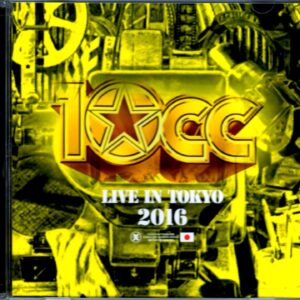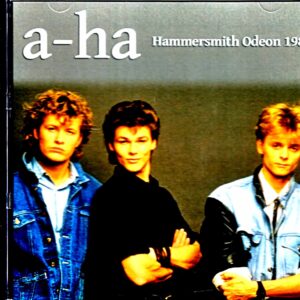Description
The sound source that first appeared on the label has arrived!!! Pink Floyd’s important sound source from the spring of 1970, which has not had any dramatic updates in the past few years, is finally here with amazing high sound quality + the longest recording version!!! 1970 April New York, March 11th. Several titles have been known for this performance, which is only 3 days after the start of the spring North American tour. The most representative one is probably “TRADEMARK MOO” that came out in the 1990s. There were other same-day performance titles such as “STONY BROOK”, but I think it was the aforementioned edition that made the best sound of this day and established it among unofficial sound source fans. However, this edition has the tuning scene before the performance and the gaps between songs cut out, and the show is crammed into one CD, so it is clear to everyone that it is not a complete version. was. This situation changed in 2013, when Mr. Neonknight released the DAT source transferred from a much younger generation cassette. This includes the parts between songs that were completely cut off on the Highland edition, and the longest version of this show finally appeared, making sound source fans all over the world excited. However, it was also true that the previously released version was still slightly better in terms of sound quality. However, if you actually listen and compare carefully, you will find that the already released version (* Source 1) has some drops in the right channel. On the other hand, the Neonknight public version (* Source 2) had some deterioration in the left channel, and neither could be said to be perfect in terms of sound. However, if you use the left channel of source 1, which has excellent sound quality, as the base, and restore the pre-show scenes and between songs that were completely cut out using the right channel of source 2, you will get a wonderful result. Isn’t it? This is the record of “Source 1 + 2”, which has the longest length and sound quality ever, and is the first title to appear on the label that will set a new standard for New York performances in 1970!!Press the play button The situation before the start of the performance appears in high resolution, and this appears as the effect of Source 1 + 2 with the longest duration of over 5 minutes. Looking at the seconds, 00:51-1:05 and 4:56-track end are source 1 based on the previously released version, and the other 00:00-00:50 and 01:05-04:55 is source 2, making it an interesting track where you can see the differences in the scenes that remain in each source. The superiority of the performance sound also stands out from the beginning of “Astronomy Domine”, and the amazing zero-distance sound will make you realize that the recording microphone was in a very good position, more than you can hear on the previously released version. In fact, even if you pay close attention to the way the two voices arrive and each instrument, there is not a single sound that is subdued, and it is hard to believe that it was recorded 50 years ago. Even after the end of the song, the tuning for about 2 minutes is seamlessly connected by source 2, allowing you to listen to it in the desired position and as it should be. “Careful with that Ax, Eugene” also has the aggressiveness that can only be achieved by playing it alone, with a sharp sound that is almost SBD class. Source 2 seamlessly compensates for the inter-song tuning for about 2 minutes after the end of the song, and the appearance of Dave correcting subtle variations and playing the chords appears vividly. “Cymbaline” has a slight lack of sound at 9:58 (probably due to a tape change), but the texture and dynamic feel of the sound remains the same, so there is almost no discomfort. By the way, the 7 seconds just before that, from 9:50 to 57, is a unique section that remains in Source 2, and even this small section, which was missing on the previous release, was constructed using all the existing sounds. is. The pitch of “Atom Heart Mother”, which was incorrect in the original recorded sound, has been corrected for this recording, and the mysterious floating feeling and flickering of mental images created by the two guide vocals are played in high-resolution sound that will give you goosebumps. Also, since the sound has been changed to monaural, the waves of the sound are good from beginning to end, and it is worth paying attention to how the combination of tones created by each instrument permeates deeply and heavily into the ears. In “Set the Controls for the Heart of the Sun”, the sound image changes around 0:13 and the sound becomes even more transparent and powerful, but this is probably at this position when it was originally recorded or when it was copied. I think it’s a sign that an effect was added. However, thanks to this, the tones that subtly change intonation come out even more vividly, and I am overwhelmed by the way the repetition of the theme flows out with a deep, transparent sound. Unfortunately, “A Saucerful of Secrets” was recorded halfway because the tape ran out, and “Interstellar Overdrive”, which was probably played after that, is also not recorded. You may be thinking, “What, they didn’t record it all the way to the end?” However, the listenability and depth of the lingering sound created by the intoxication of this high-precision tone is full of surprises, right down to the last note. Please write down what you are doing. Another highlight of this sound source is the chat between the recorder and his two female friends between songs. Normally, it would be annoying if such chats were included in the recording, but here you can hear the three young men and women chatting in an intimacy that resembles a light romantic relationship, as they express their pure admiration for the performance they just finished. , and how this recording tape (=this master cassette used in this work) was stored in the time capsule in his (=recorder’s) attic. We are talking about whether we will be able to find it 50 years from now, amidst the rich flow of our youth and the excitement of the show. Of course, it’s in English, so there’s a hurdle if you can understand it, but just knowing that the content of the conversation is of that kind makes you feel a sense of familiarity in the chat between songs. Above all, there is no conversation at all during the performance, so the fact that the performance is purely enjoyable is a big topic. And now in 2020, 50 years have passed. The sound derived from that time capsule, which is probably in an attic somewhere, has been carefully examined using the latest digital remastering, and with ultra-high resolution sound worthy of the shock of the label’s first appearance, it will transport us 50 years later to this day’s venue. It will take you back in time. The Fillmore West performance “Definitive Fillmore West 1970” will be released at the same time as “Definitive Fillmore West 1970”, which will be held on April 29th, about two weeks after this New York performance, and although both are important sound sources from the spring of 1970, the performance expression and show content have changed. It’s a title full of fun to listen to and compare. Please enjoy it together!!! Mainly using Source 1, patch the missing parts of the tuning before Astronomy Domine and Mystery with Source 2. SUNY Gymnasium, State University of New York, Stony Brook, Long Island, New York, USA 11th April 1970 TRULY PERFECT SOUND(UPGRADE) Disc 1 (41:48) 1. Tuning 2. Astronomy Domine 3. Careful with that Ax, Eugene 4. Cymbaline Disc 2 (42:39) 1. Tuning 2. Atom Heart Mother 3. Set the Controls for the Heart of the Sun 4. A Saucerful of Secrets







Reviews
There are no reviews yet.